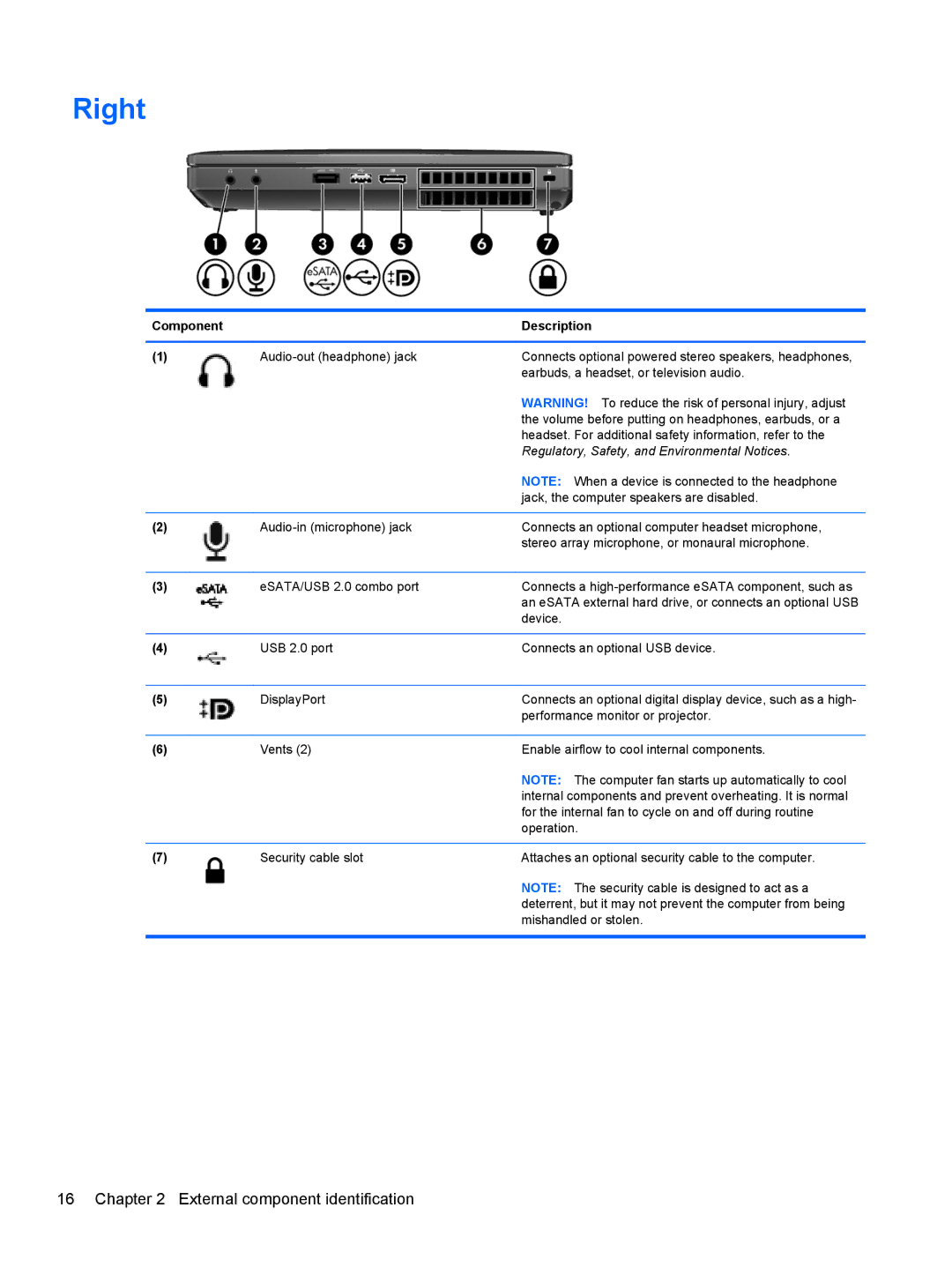
Right
Component |
| Description |
|
|
|
(1) | Connects optional powered stereo speakers, headphones, | |
|
| earbuds, a headset, or television audio. |
|
| WARNING! To reduce the risk of personal injury, adjust |
|
| the volume before putting on headphones, earbuds, or a |
|
| headset. For additional safety information, refer to the |
|
| Regulatory, Safety, and Environmental Notices. |
|
| NOTE: When a device is connected to the headphone |
|
| jack, the computer speakers are disabled. |
|
|
|
(2) | Connects an optional computer headset microphone, | |
|
| stereo array microphone, or monaural microphone. |
|
|
|
(3) | eSATA/USB 2.0 combo port | Connects a |
|
| an eSATA external hard drive, or connects an optional USB |
|
| device. |
|
|
|
(4) | USB 2.0 port | Connects an optional USB device. |
|
|
|
(5) | DisplayPort | Connects an optional digital display device, such as a high- |
|
| performance monitor or projector. |
|
|
|
(6) | Vents (2) | Enable airflow to cool internal components. |
|
| NOTE: The computer fan starts up automatically to cool |
|
| internal components and prevent overheating. It is normal |
|
| for the internal fan to cycle on and off during routine |
|
| operation. |
|
|
|
(7) | Security cable slot | Attaches an optional security cable to the computer. |
|
| NOTE: The security cable is designed to act as a |
|
| deterrent, but it may not prevent the computer from being |
|
| mishandled or stolen. |
|
|
|
16 Chapter 2 External component identification
